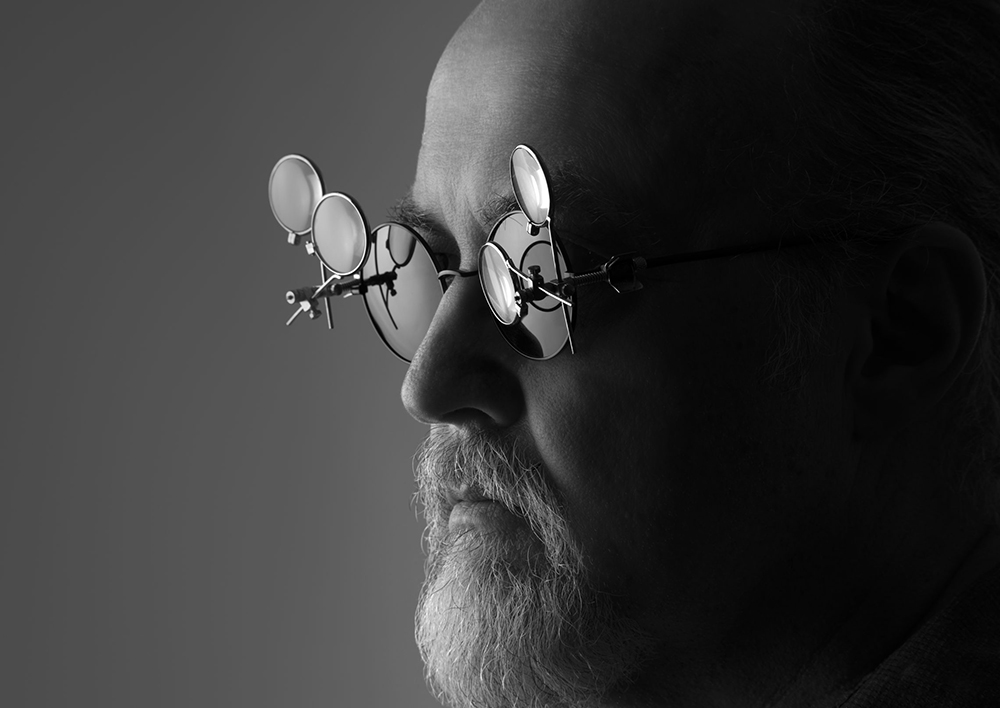
如果沒有出現電力系統整合,世界會是什么樣子?蒸汽朋克迷知道這一問題的答案。蒸汽朋克想象中的未來復古與時尚并存,未來經濟將完全依靠蒸汽運行(包括飛行汽車甚至火車),這就好像維多利亞時代的蒸汽技術勝過電力一樣。事實證明,大型投資銀行之一的巴克萊銀行(Barclays)傾向于運用一些蒸汽朋克式思維,至少在涉及市場的熱門話題人工智能時是這樣。
巴克萊銀行的媒體和電信團隊在其年度《噪音中的信號》(Signal in the Noise)匯編中提到了人工智能對藝術的潛在影響,還提到了好萊塢編劇因一些分歧而罷工的熱門案例,尤其是在電影劇本寫作中使用人工智能的問題上。除其他事項外,該匯編還討論了好萊塢導演的初步協議,其中包括一項協議,即“人工智能不能取代人類成員履行相關職責。”
巴克萊銀行表示,人工智能實際上可能是創意人員的福音,如果使用得當,可能會改變他們與企業之間的權力平衡范式。巴克萊銀行還表示,人工智能對作家的威脅并不像人們想象的那么緊迫。看看蒸汽機這一案例就知道了。
考慮一下蒸汽朋克的情況
巴克萊銀行寫道:“技術傾向于從根本上將原有的工作流程重組為不同的形式,最終產生新能力。”換句話說,該銀行預測人工智能將改變好萊塢的運作方式,從而會帶來更多機會而不是減少機會。問題是,這不會一蹴而就。
將新技術完全整合到工作場所可能比新技術本身的出現要晚幾十年,因為實施成本很高,而且大多數公司只是尋求快速提高生產率。該匯編以工廠適應電力發明為例。最初,工廠只是簡單地用電動機取代了蒸汽機,而沒有重新設計工廠布局,以實現蒸汽效率最大化。
這種偷懶式創新插件限制了效率提升(完全使用電力能夠實現的),直到一代人之后,當企業完全圍繞電力進行重新設計時,它們才獲得了電力帶來的全部好處。目前,在人工智能的起步階段,企業正在將這項技術插入現有的工作流程中,但并沒有圍繞其重組整個商業模式。
與導演不同,那些罷工的編劇們在人工智能問題上沒有達成一致,他們本質上是在倡導蒸汽朋克式未來,即當前的創意產業在未來幾十年內都以同樣的方式運作。巴克萊銀行表示,這不是技術在現代經濟中的運作方式。換句話說,不會有蒸汽朋克式的20世紀90年代風格的編劇室,永久地創作像《宋飛正傳》(Seinfeld)和《老友記》(Friends)這樣的作品。它看起來會有所不同。
對技術作用的根本性誤解
導演工會達成了協議:“確認人工智能不是人類”,因此不能承擔編劇的職責。正如英國《金融時報》Alphaville博客所指出的那樣,巴克萊銀行聲稱,該協議的框架“代表了對技術在內容創作中的作用的根本性誤解”。
作家和人工智能之間的關系類似于畫家和相機之間的關系(當時相機剛被發明出來)。相機作為一種沒有獨立視覺和藝術意圖的設備,從來沒有與畫家競爭過。更重要的是,攝影并沒有使繪畫被淘汰。它只是孕育了一種全新的藝術形式,可以說可及性更高,也更民主。它在沒有驅逐現有參與者的情況下擴大了藝術市場。現在說人工智能是否會遵循這一趨勢還為時過早,但巴克萊銀行樂觀地認為,新技術將強化——并最終重新定義——創作過程,使創作者受益。
人們對人工智能在工作場所的普遍擔憂是,它將使任務自動化,并消除對人類工作者的需求。巴克萊銀行認為,就藝術而言,制片公司每天都能從外部作家那里收到大量可供利用的故事,這并不妨礙它們聘請更多有才華的作家,比如罷工的那些作家。
另一大擔憂是,借助人工智能,任何人都能創作出以前需要投資教育和工具才能創作出來的作品。人工智能可能會使更多的人創作出更多的藝術作品,但內容激增并不一定意味著成熟的創作者的厄運。《噪音中的信號》這一匯編表明,數量的增加反而會產生更多的分銷渠道,比如社交媒體和在線平臺,來分享內容的爆炸式增長。今天失去工作的藝術家將在未來幾年被更多的藝術家所取代,因為他們利用這種新工具進行創作。
巴克萊銀行寫道:“理論上,最優秀的內容創作者應該利用人工智能來變得更出色,更難以取代。卓越人才將變得更有價值,因為技術將使他們的作品得到進一步提升,就像華特·迪士尼(Walt Disney)或詹姆斯·卡梅隆(James Cameron)利用技術拓寬講故事的畫布一樣。”
創意行業正處于十字路口。《噪音中的信號》敦促藝術家們關注歷史,擁抱下一次工業革命。(財富中文網)
譯者:中慧言-王芳
如果沒有出現電力系統整合,世界會是什么樣子?蒸汽朋克迷知道這一問題的答案。蒸汽朋克想象中的未來復古與時尚并存,未來經濟將完全依靠蒸汽運行(包括飛行汽車甚至火車),這就好像維多利亞時代的蒸汽技術勝過電力一樣。事實證明,大型投資銀行之一的巴克萊銀行(Barclays)傾向于運用一些蒸汽朋克式思維,至少在涉及市場的熱門話題人工智能時是這樣。
巴克萊銀行的媒體和電信團隊在其年度《噪音中的信號》(Signal in the Noise)匯編中提到了人工智能對藝術的潛在影響,還提到了好萊塢編劇因一些分歧而罷工的熱門案例,尤其是在電影劇本寫作中使用人工智能的問題上。除其他事項外,該匯編還討論了好萊塢導演的初步協議,其中包括一項協議,即“人工智能不能取代人類成員履行相關職責。”
巴克萊銀行表示,人工智能實際上可能是創意人員的福音,如果使用得當,可能會改變他們與企業之間的權力平衡范式。巴克萊銀行還表示,人工智能對作家的威脅并不像人們想象的那么緊迫。看看蒸汽機這一案例就知道了。
考慮一下蒸汽朋克的情況
巴克萊銀行寫道:“技術傾向于從根本上將原有的工作流程重組為不同的形式,最終產生新能力。”換句話說,該銀行預測人工智能將改變好萊塢的運作方式,從而會帶來更多機會而不是減少機會。問題是,這不會一蹴而就。
將新技術完全整合到工作場所可能比新技術本身的出現要晚幾十年,因為實施成本很高,而且大多數公司只是尋求快速提高生產率。該匯編以工廠適應電力發明為例。最初,工廠只是簡單地用電動機取代了蒸汽機,而沒有重新設計工廠布局,以實現蒸汽效率最大化。
這種偷懶式創新插件限制了效率提升(完全使用電力能夠實現的),直到一代人之后,當企業完全圍繞電力進行重新設計時,它們才獲得了電力帶來的全部好處。目前,在人工智能的起步階段,企業正在將這項技術插入現有的工作流程中,但并沒有圍繞其重組整個商業模式。
與導演不同,那些罷工的編劇們在人工智能問題上沒有達成一致,他們本質上是在倡導蒸汽朋克式未來,即當前的創意產業在未來幾十年內都以同樣的方式運作。巴克萊銀行表示,這不是技術在現代經濟中的運作方式。換句話說,不會有蒸汽朋克式的20世紀90年代風格的編劇室,永久地創作像《宋飛正傳》(Seinfeld)和《老友記》(Friends)這樣的作品。它看起來會有所不同。
對技術作用的根本性誤解
導演工會達成了協議:“確認人工智能不是人類”,因此不能承擔編劇的職責。正如英國《金融時報》Alphaville博客所指出的那樣,巴克萊銀行聲稱,該協議的框架“代表了對技術在內容創作中的作用的根本性誤解”。
作家和人工智能之間的關系類似于畫家和相機之間的關系(當時相機剛被發明出來)。相機作為一種沒有獨立視覺和藝術意圖的設備,從來沒有與畫家競爭過。更重要的是,攝影并沒有使繪畫被淘汰。它只是孕育了一種全新的藝術形式,可以說可及性更高,也更民主。它在沒有驅逐現有參與者的情況下擴大了藝術市場。現在說人工智能是否會遵循這一趨勢還為時過早,但巴克萊銀行樂觀地認為,新技術將強化——并最終重新定義——創作過程,使創作者受益。
人們對人工智能在工作場所的普遍擔憂是,它將使任務自動化,并消除對人類工作者的需求。巴克萊銀行認為,就藝術而言,制片公司每天都能從外部作家那里收到大量可供利用的故事,這并不妨礙它們聘請更多有才華的作家,比如罷工的那些作家。
另一大擔憂是,借助人工智能,任何人都能創作出以前需要投資教育和工具才能創作出來的作品。人工智能可能會使更多的人創作出更多的藝術作品,但內容激增并不一定意味著成熟的創作者的厄運。《噪音中的信號》這一匯編表明,數量的增加反而會產生更多的分銷渠道,比如社交媒體和在線平臺,來分享內容的爆炸式增長。今天失去工作的藝術家將在未來幾年被更多的藝術家所取代,因為他們利用這種新工具進行創作。
巴克萊銀行寫道:“理論上,最優秀的內容創作者應該利用人工智能來變得更出色,更難以取代。卓越人才將變得更有價值,因為技術將使他們的作品得到進一步提升,就像華特·迪士尼(Walt Disney)或詹姆斯·卡梅隆(James Cameron)利用技術拓寬講故事的畫布一樣。”
創意行業正處于十字路口。《噪音中的信號》敦促藝術家們關注歷史,擁抱下一次工業革命。(財富中文網)
譯者:中慧言-王芳
What would the world look like without the integration of electricity? Steampunk fans know. For anyone who’s not versed in one of the most popular science fiction genres outside of, say, Star Wars–style space opera or eerily relevant cyberpunk (and why wouldn’t you be?), steampunk imagines a retro-chic future where an economy of the future, including flying cars or even trains, would run completely on steam, as if the Victorian age technology prevailed over electricity. It turns out that one of the major investment banks, Barclays, is prone to some steampunk-style thinking, at least when it comes to the markets’ topic du jour: artificial intelligence.
For its annual Signal in the Noise compendium, assembled by the bank’s media and telecoms team, Barclays addresses A.I.’s potential impact on art and touches on the topical case of the Hollywood writers’ strike over several disagreements but especially the use of A.I. in screenwriting. It discusses, among other things, the tentative Hollywood directors’ deal that includes the agreement that “A.I. cannot replace the duties performed by members.”
A.I. may actually be a boon to creatives, and could tilt their power balance with corporations if used wisely, Barclays said, adding that the threat to writers is not as urgent as perceived. Just look at the steam engine.
Consider the steampunk
“Technology tends to fundamentally restructure pre-existing workflows into different forms, which ultimately results in new capabilities,” Barclays wrote. In other words, the bank predicts that A.I. will transform Hollywood’s operations, but in a way that expands, not eliminates, opportunity. The catch is, it won’t happen overnight.
The full integration of new tech into the workplace can lag decades behind its advent, because it is costly to implement and most companies are looking for just a quick productivity boost. The compendium uses the example of factories adjusting to the invention of electricity. Initially, factories simply replaced steam engines with electric motors without redoing the factory layout that was structured around maximizing steam efficiency.
This lazy innovation plug-in restricted the amount of efficiency that electricity could add, and it was only a generation later, when businesses completely redesigned around electric power, that they reaped its full benefits. Right now, in the infancy of A.I., companies are inserting the technology into existing workflows but not restructuring their whole business models around it. The writers who are on strike and, unlike the directors, don’t have an agreement on A.I., are essentially advocating for a steampunk-style future where the current creative industry works in the same fashion as it has been for the next several decades. That’s just not how technology works in the modern economy, Barclays says. In other words, there won’t be a steampunk alternative of 1990s-style writers’ rooms producing works like Seinfeld and Friends in perpetuity. It will look different.
‘Fundamental misinterpretation of the role of technology’
The directors union reached an “agreement confirming that A.I. is not a person,” and therefore cannot assume writers’ duties. As noted by the FT‘s Alphaville blog, Barclays claims that the framing of the agreement “represents a fundamental misinterpretation of the role of technology in content creation.”
The relationship between a writer and A.I. is akin to that of a painter and a camera, when the tool was first invented. The camera, being a device without independent vision and artistic intent, was never in competition with a painter. What’s more, photography did not make painting obsolete. It simply birthed an entirely new art form that is arguably more accessible and democratic. It expanded the art market without expelling existing players. It’s too early to say whether A.I. will follow this trend, but Barclays is optimistic that the new tech will enhance—and eventually redefine—the creative process to the benefit of creatives.
A common fear about A.I. in the workplace is that it will automate tasks and eliminate the need for human workers. In the context of art, Barclays argues that production companies already receive a deluge of serviceable stories from outside writers every day, which doesn’t stop their commissioning of more talented writers like the ones on strike.
Another fear is that with A.I., anyone will be able to produce work that previously required an investment in education and tools to create. A.I. will make it possible for more people to produce more art—but a proliferation of content doesn’t have to spell doom for established creatives. Signal in the Noise suggests that the increased volume will instead result in the creation of more distribution channels to share the explosion of content, such as social media and online platforms. The artists put out of work today will be replaced by many more in years to come, enabled by exploitation of this new tool.
“A.I. should in theory be used by the best content creators to become even better and tougher to replace,” Barclays wrote. “The best talent will become even more valuable as technology will enable further enhancement of their work the same way Walt Disney or James Cameron incorporate technology to widen the canvas for storytelling.”
The creative sector is at a crossroads, with the option to eschew A.I. and proceed into a steampunk-esque future largely trapped in the past. Signal in the Noise urges artists to take note of history and embrace the next industrial revolution.






